Walkability
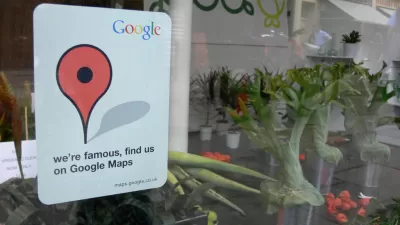
Location Optimization Tools: Toward More Comprehensive and Multi-Modal Indicators
New tools are becoming available to help people evaluate the quality of walking, cycling, public transit and automobile accessibility when making home location decisions. This information can help create more efficient and sustainable communities.
Sidewalk Survey is First Step Towards a More Walkable San Diego
Before San Diego can begin to fix its "busted sidewalks and busted sidewalk policies," the city is embarking on a high-tech $1 million effort to assess the quality of its pedestrian infrastructure.
To Become a "Great City", Miami Seeks to Boost Pedestrian-Friendliness
With the housing bust of the Great Recession fading in the rear-view mirror, a maturing Miami aspires to become one of the world's great cities. City leaders see the creation of a "Downtown Pedestrian Priority Zone" as the path to get them there.
Three Quick Wins for Auckland (or Any City’s) Walkability
The following “top three” relatively quick wins for a more walkable city, written below from the perspective of Brent’s observations, reflect some relatively low-cost opportunities toward a more liveable & successful Auckland.
Is Your City One of America's Most Walkable?
Walk Score has released its 2014 ranking of Most Walkable U.S. Cities and Neighborhoods. Though New York's position at the top of the list would be easy to explain, one surprise made the top five.
L.A.'s Sprawling Valley Undertakes a Pedestrian-Friendly Retrofit
The San Fernando Valley is infamous for its seemingly endless expanse of flat, gridded single-family sprawl. But to accommodate growth and improve the quality of life, the Valley's distinct neighborhoods are looking to create a sense of place.
Americans Pay More for Walkability
Preliminary results from a new study suggest that Americans are willing to pay about $850 more per Walk Score point when purchasing a home.

Why Suburban Sprawl is the Worst Idea America Has Ever Had
In a recent "TED Talk", Jeff Speck makes the case for creating a more walkable America based not on design arguments, but rather on the potential to create a more economically resilient, healthier, and environmentally sustainable country.
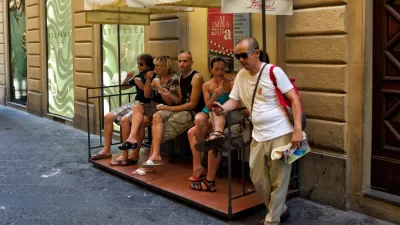
The Next Big Thing: "Sit-able Cities"
Supported by imagery of human urban conduct, Chuck Wolfe argues that walkable is good, but sit-able is better—and that "it’s time for the next big focal point and the next big idea, the 'Sit-able City'."
Why Walkability is a Civil Rights Issue
The NAACP is probably not the first advocacy group you think of when it comes to supporting walking and biking. But the civil rights organization encourages increasing physical activity in minority communities to help reduce childhood obesity.

Get Your City Walking With DIY Wayfinding
The creator of a lauded guerrilla wayfinding project for Raleigh has launched a new website that allows users to duplicate his compelling signage for their communities.
Why Affordable Housing is an Environmental Issue
Improving our cities and suburbs is just as important to environmental sustainability as regulating pollution or conserving undeveloped land, argues Kaid Benfield.
Speed Cameras 2.0: Ticketing More Than Just Speeding
DC traffic scofflaws beware: You may be recorded! In one of the nation's most comprehensive use of traffic cameras, motorists who run stop signs or don't stop for peds in crosswalks could find a "ticket in the mail". Plus, 132 cameras will be added.
Walkable Streets Guide Gets Federal Endorsement
The Federal Highway Administration's recent support for the use of an ITE/CNU authored walkable urban thoroughfares guide as a companion to the widely used AASHTO "Green Book" gives local transportation engineers more tools to create livable streets.
When Speeding Pays
Speeding is paying-off in the amount of $15 million for Seattle area schools thanks to speed-enforced cameras, a proven but nonetheless controversial traffic safety tool. Revenue will be used to make walking safer under a proposal by Mayor McGinn.
Measuring Walkability to Improve It
After leading annual conferences and championing the International Charter for Walking, the non-profit Walk21 is expanding its efforts to improve walkability and livability across the globe by benchmarking the pedestrian-friendliness of world cities.
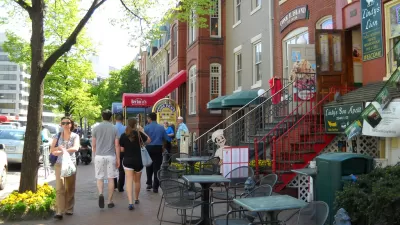
New Tool for Measuring Neighborhood Walkability
Watch out Walk Score, you've got some competition. Mapping company Maponics is measuring pedestrian-friendliness with a new tool called 'Walkability'. They measure several factors Walk Score doesn't, including crime, street type, and speed limit.
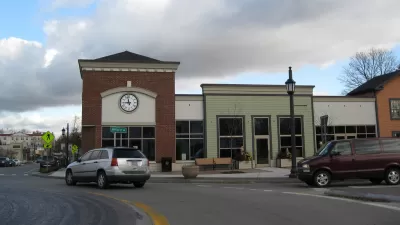
Road Diet Paves the Way for Town's Return to a 'Wonderful Life'
Community resistance stopped plans for widening Hamburg, New York's Main Street. By embracing calmer streets, the town is flourishing and once again enjoying comparisons to the idyllic Bedford Falls of 'It's a Wonderful Life.'
Walkability, But Hold the Red Tape
Urbanists must adopt less bureaucratic approaches so that the next generation can build and grow the economy, Andres Duany says. Hence the proliferation of “lean” codes that emphasize only the essentials of shaping community.
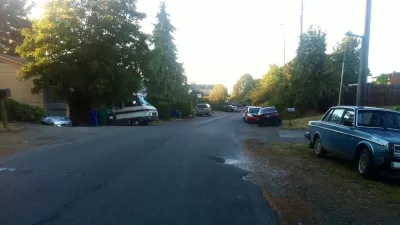
To Control Health Costs, Build Sidewalks
Each month new research emerges linking public health with the built environment. Yet just a small fraction of healthcare spending goes toward reducing our exposure to unhealthy environments. Under the Affordable Care Act, that could soon change.
Pagination
Urban Design for Planners 1: Software Tools
This six-course series explores essential urban design concepts using open source software and equips planners with the tools they need to participate fully in the urban design process.
Planning for Universal Design
Learn the tools for implementing Universal Design in planning regulations.
Smith Gee Studio
City of Charlotte
City of Camden Redevelopment Agency
City of Astoria
Transportation Research & Education Center (TREC) at Portland State University
US High Speed Rail Association
City of Camden Redevelopment Agency
Municipality of Princeton (NJ)


































